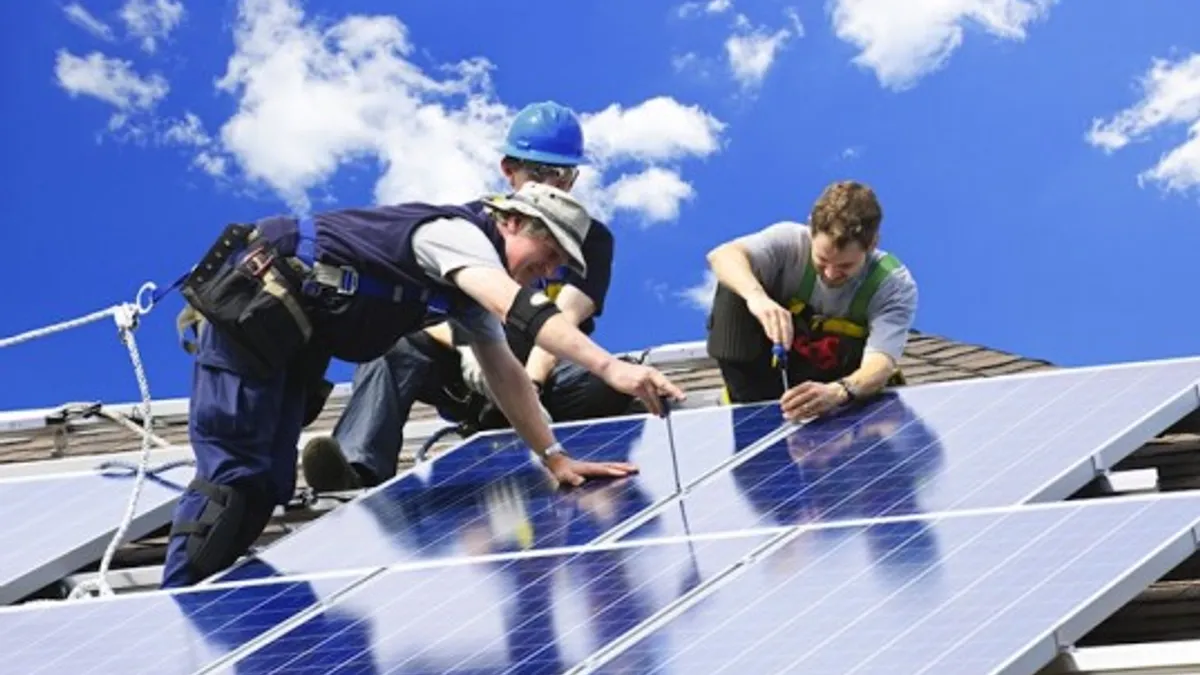Dive Brief:
- There are 12.3 GW of distributed solar capacity in the United States, and according to new data from the U.S. Energy Information Administration about 30% of it is owned by third parties.
- Third-party owners typically sell either solar energy through power purchase agreements, or provide the equipment to residences or business to generate the carbon-free power. EIA recently included third party ownership (TPO) on its monthly and annual surveys of utility operations.
- The strategy has come under scrutiny, with pushback from traditional utilities. In Florida, voters in last month's election rejected a ballot initiative that could have put limits on third-party ownership. In September, a Virginia hearing examiner determined third party financing for residential solar installations is legal over objections from utilities.
Dive Insight
Distributed solar capacity—defined by installations under 1 MW—is growing rapidly, in part bolstered by financing models that allow third-party companies to take on the cost of installing clean energy equipment for customers who are unable or unwilling to make the up-front payment. So far, third-party owners control 3.7 GW, according to EIA.
Third-party owners tend to be more common in the residential sector than in the commercial and industrial, according to EIA: they own 44% of distributed solar capacity in the residential sector, compared with 11% in the C&I sectors.
"The residential sector accounts for 56% of distributed solar capacity, but 84% of third-party-owned solar capacity," EIA noted.
California has the highest distributed solar capacity at 4.9 GW, with one-third of of owned by third parties. Arizona and Maryland have the highest shares of TPO capacity; in those states, third parties own slightly more than half of their distributed solar capacity. But not all states reported TPO capacity.
"Utilities did not report any TPO capacity in 20 states, all which have relatively low distributed solar capacity (about 0.3 GW total)," EIA said. "Some states have (or had) laws restricting TPOs."
While Florida utilities failed to limit TPO solar installations, advocates in the state are still pressing the other direction—to explicitly allow the arrangement. The group Floridians for Solar Choice ad pressed for another initiative this year that would have legalized third-party ownership of distributed solar, but the measure did not make it onto the ballot.















